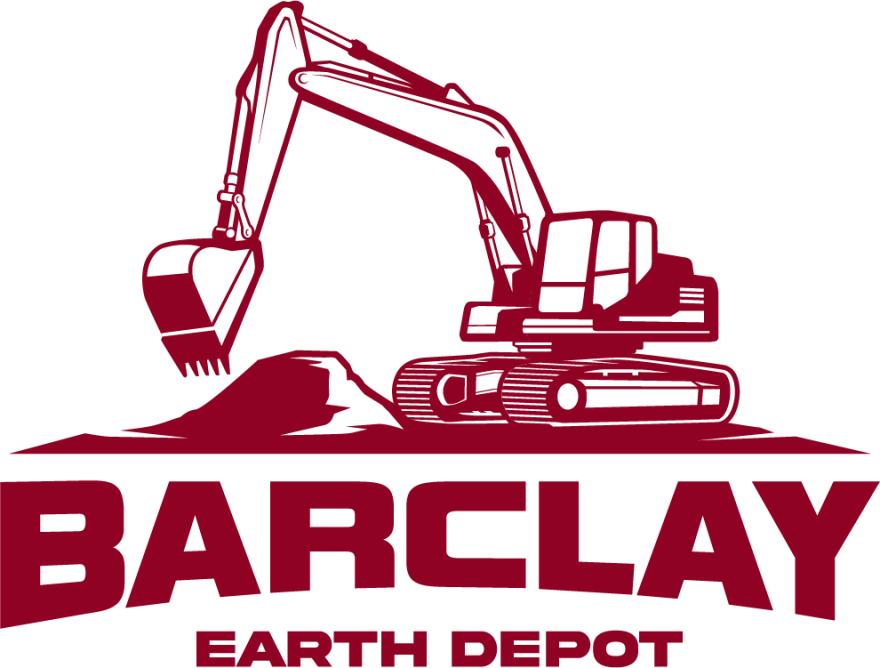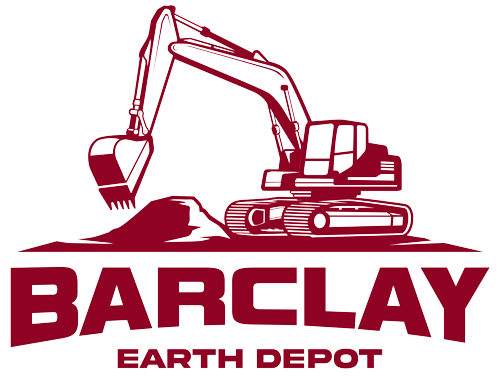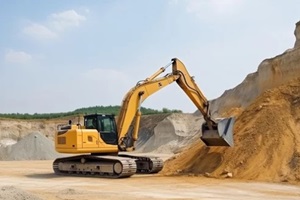 Choosing the right sand is a big decision when taking on landscaping jobs. Between texture, color, grain size, and more, there are many sand options out there, which can get confusing fast. This guide breaks down the key things to think about when selecting landscaping sand for softscape and hardscape projects.
Choosing the right sand is a big decision when taking on landscaping jobs. Between texture, color, grain size, and more, there are many sand options out there, which can get confusing fast. This guide breaks down the key things to think about when selecting landscaping sand for softscape and hardscape projects.
Common Sand Types Used in Landscaping
Not all sands are created equal. The most common types of sand used in landscaping feature significant differences.
Utility Sand
Also called fill sand, utility sand is a coarse mixture of gray, white, tan, beige, and brown particles. This sturdy material compacts extremely well, even without extra processing or washing. It’s typically used under paving stones as a base for concrete, to fill holes and trenches, and for compaction in building projects.
Beach Sand
Beach sand, also called white sand or sandbox sand, is a fine, soft sand like what you would find by the sea. It often builds play areas such as sandboxes and volleyball courts. Beach sand is free of silica, making it safe for playtime.
Masonry Sand
Masonry sand is a cleaned and filtered sand used in making concrete and mortar. It gives smooth, sleek finishes for brick, block, and stone work. Masonry sand creates clean lines between masonry materials.
Concrete Sand
Concrete sand forms a base layer for raised patios, pools, and walkways. It can also replenish beach sand in a volleyball court, though it’s not recommended as the main sand for these applications. Concrete sand mixes cement and sand to form this sturdy construction material.
Key Criteria for Selecting Landscaping Sand
Choosing landscaping sand involves assessing its suitability across a range of factors:
- Appearance and color – Match the sand color with design elements such as pavers or stone. For example, play sand provides light tones.
- Composition and purity – Masonry sand tends to be fairly pure, while beach sand may have impurities. Check that the composition fits your application.
- Grain Size and shape – Angular grains with uniformity provide strength, while rounded grains fill gaps between pavers. Consider how well you need the grains to interlock and your permeability needs.
- Performance factors – Consider drainage rate, stability, compaction resistance, and frost resistance, which are essential properties depending on use.
- Environmental impacts – The manufacturing process can affect pH and mineral content. Ensure it won’t impact the soil or leach out.
Landscaping Sand for Different Applications
The suitability of landscaping sand is strongly dependent on where and how you plan on using it:
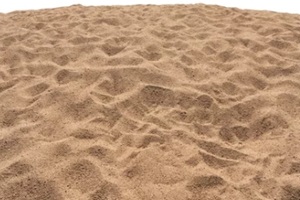 Softscapes – Beach sand is ideal for turf, sports fields, and playgrounds. High drainage and stability underfoot are essential.
Softscapes – Beach sand is ideal for turf, sports fields, and playgrounds. High drainage and stability underfoot are essential.- Hardscapes – Masonry sand is the preferred choice for pavers, concrete, and natural stone. It flexibly fills gaps while allowing moisture drainage.
- Utility Bedding – Utility sand is known for its compactability, making it ideal for use as a foundation for utilities and asphalt as well, as for filling holes and trenches.
- Joint Filling – The rounded grains of masonry sand slide smoothly into cracks between pavers or slabs.
- Playgrounds, Sports Fields – Beach sand’s fine rounded grains cushion impact and provide a soft surface to walk on.
Working with Landscaping Sand on Your Projects
Ordering the sand is just the beginning. Proper handling and installation procedures are also essential:
- Delivery, storage, and handling – Schedule timely delivery once the site is ready. Store sand high and dry to prevent contamination, and make sure you protect it from weather extremes.
- Preparation of substrate and base materials – Compact and stabilize base materials such as aggregate prior to spreading the sand.
- Installation and application techniques – Spread sand evenly across areas. For jointing, compact pavers prior to sweeping the sand into gaps, and ensure you are following manufacturer specifications for specialty sands.
- Maintenance considerations – Top up sand levels as needed. Remove weeds and any vegetation promptly. Check for erosion or drainage issues and rectify as needed.
Choosing the Right Landscaping Sand Supplier
With such an important material, the supplier you choose also matters:
- Sourcing and supply options – Local quarries or landscape yards often provide smaller volumes. Larger suppliers ship bulk orders across regions.
- Testing sand quality and making informed selections – Don’t just take claims at face value. Review lab certifications and sample testing first.
- Developing lasting trade partnerships – Find suppliers willing to work closely with you. Offer feedback to help refine products over time.
Reliable suppliers help ensure you get consistent sand quality. By submitting samples from each batch for independent lab testing, they give you peace of mind.
Get the Best Quality Landscaping Sand from Barclay Earth Depot
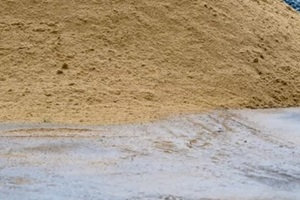 Choosing the right sand truly makes or breaks landscaping projects. For hardscapes, softscapes, playgrounds, or sports fields, pay close attention to color, composition, grain size, and performance when selecting materials. Masonry sand promotes clean lines between pavers, while utility sand stands up to heavy use.
Choosing the right sand truly makes or breaks landscaping projects. For hardscapes, softscapes, playgrounds, or sports fields, pay close attention to color, composition, grain size, and performance when selecting materials. Masonry sand promotes clean lines between pavers, while utility sand stands up to heavy use.
And you can’t beat fine, rounded beach sand for cushioning play areas. But it’s not just about ordering the correct sand. Proper handling, storage, installation, and maintenance are equally important. Simple contamination or erosion can undermine even the highest quality sand.
Most importantly, partner with suppliers who do quality testing. Barclay Earth Depot routinely submits samples to independent labs, so you can trust that our products measure up.
When you’re ready to create lasting, functional landscapes your clients will love, choose proven solutions and partners. So, if you need hand-picked premier sands or want to order top-grade utility, beach, concrete, or masonry sand, contact us today at 941.841.1681 or online.
